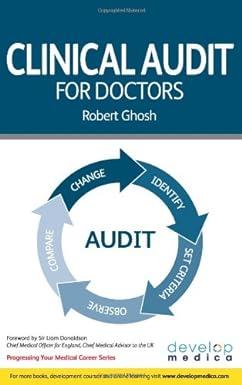Question
Chris Legstrong is an avid bicycler and the CEO of the Rolling Rubber Company, a producer of bicycle frames. Chris budgeted to sell 10,000 frames
Chris Legstrong is an avid bicycler and the CEO of the Rolling Rubber Company, a producer of bicycle frames. Chris budgeted to sell 10,000 frames this year. He also provided you with the following budgeting data:

In addition, Chris provided you with the standard variable costs per unit of input:

The actual performance of the firm, however, did not measure up to his expectations. Chris was worried. He mentioned that the actual number of frames sold was 15% more than the budgeted volume, but the results were quite negative. Chris was very puzzled about this outcome because he implanted a somewhat more complex new assembly method to save on steel tube. He was very proud of how hard his people had worked and also of his changes on the marketing strategy, which he thought worked very well. Chris provided you with the following statement about the actual results:
| Actual Results - Income Statement | |
| Revenues | $1,345,500 |
| Direct Materials (steel tube) | $460,000 |
| Direct Labor (assembling) | $647,000 |
| Variable Manuf. Overhead (power) | $45,500 |
| Contribution Margin | $193,000 |
| Fixed Manufacturing Overhead | $120,000 |
| Fixed Selling and Adm. Expenses | $80,000 |
| Operating Profit | ($7,000) |
Finally, Chris was also able to obtain the following information:

Requirements
Part A
Chris wants you to help him figure out how he could be so wrong when forecasting the performance of the firm. In particular, he wants you to calculate the following:
- How much profit should the Rolling Rubber Company have made with the actual sales volume (number of frames) if everything else was as budgeted (i.e., the flexible budget profit)?
- Calculate the Total Sales Volume Variance and Total Flexible Budget Variance.
- Calculate the Sales Price Variance.
Make sure to tell Chris whether the variances are favorable or unfavorable.
Part B
Chris wants you to help him find out more about the underlying causes of the flexible-budget variance. In particular, he wants you to calculate the following variances:
- Price and efficiency variances for direct materials.
- Price and efficiency variances for direct labor.
- Price and efficiency variances for variable manufacturing overhead.
Make sure to tell Chris whether the variances are favorable or unfavorable.
Part C
Chris wants you to help him to interpret the variances you just calculated. Based on the variances you calculated in parts A and B, tell Chris what you think happened in his firm. Focus on the big problems. There is no need to talk about the small variances. There could be multiple stories that fit the same variances. All you have to do is provide one story that makes sense and is consistent with the variances you obtained. Make sure to refer to the variances in parts A and B.
\begin{tabular}{l|l} & \\ \hline & \\ \hline & \end{tabular} 1 \begin{tabular}{l|l} & \\ \hline & \\ \hline & \end{tabular} 1Step by Step Solution
There are 3 Steps involved in it
Step: 1

Get Instant Access to Expert-Tailored Solutions
See step-by-step solutions with expert insights and AI powered tools for academic success
Step: 2

Step: 3

Ace Your Homework with AI
Get the answers you need in no time with our AI-driven, step-by-step assistance
Get Started


